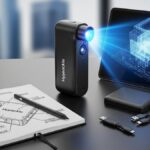Any one of you who have been with me on a range for more than about 30 seconds probably have a good grasp on the following terms and concepts. These terms, however, are not terms commonly used among Police trainers and I want to share with you how these different terms and concepts can influence you combat shooting abilities.
See what you need to see
Police trainers traditionally teach level and equal light bar sight picture, where your focus is on the front sight. This is only one aspect of what your focus should be to aim a firearm. Keep in mind the goal is to simply place accurate hits onto your intended target. Aiming is simply pointing your gun at the target and holding it there until the round is fired.
You should always start with a complete target focus. If you do not see the threat in the first place nothing else really matters. Once you see your threat, you need to have the skill to know exactly what it is you need to focus on to make your hits. If your threat is close you may not need to move your focus off of your threat at all. If your threat presents a difficult target you may need that clean crisp front sight focus. You must see what you need to see or you will miss. You only need to see what you need to see as everything else is a waist of time.
Flinching
Traditionally Police are trained sight focus and trigger control. We then tell students that they are jerking the trigger when they miss. The main shooter problem is actually very simple dont flinch.
Flinching is your subconscious reaction to the gun going off. When you flinch it results in you pushing your gun around, jerking the trigger, etc. If you do not flinch in the first place you will most likely not have all the other issues.
The easiest way to insure you are not flinching is to force yourself not to blink. It does not matter if you shoot one eye open or both. Either way, do not blink. Your eye(s) must stay open while you are firing.
The most important part of shooting is your visual input. You can not get visual input with both eyes closed.
Traditionally Police are also taught to utilize the surprise break method to increase accuracy. The concept of this is that you press the trigger and allow your mind to be completely surprised when the gun goes off thus ensuring you did not jerk or move the gun. I personally take issue with the concept of you being surprised that your gun goes off.
If your eye(s) remain open you will see if you are moving the gun. The gun should fire when you want it to fire, never by surprise. To increase accuracy on a difficult shot simply use the concept of pulling your front sight through the rear. This simply means that you focus on your front sight and as you pull the trigger rearward, you visualize that youre pulling the front sight through your rear sight. There will be no surprise that your gun went off, and there will be no surprise when you look at your target. You will have seen exactly where your front sight was when the gun went off, which will be where your hit is.
Driving the sight
This term means that you are forcing you gun back onto target during recoil. If we were training to be target shooters it would be fine to fire a round, let the gun recoil, and then let the gun lower back onto target. We however are not target shooters and letting the gun drive you is slow.
When tasked with fast aggressive fire you need to drive your gun. Using proper stance and grip you should be forcing your gun back onto target the instant a round is fired. If your eye(s) remain open you will see your sight come back down onto the target. Once you see what you need to make another hit, you can fire again.
There is a timing issue with driving the sight. Remember aiming is pointing your gun at the target and holding it there until the round is fired.
Think about a poor shooter you have seen when their gun has gone click (no round fired) and the muzzle of the gun takes a nose dive. If this shooter is missing the target what you saw was a flinch.
Now think about a good shooter you have seen when their gun has gone click (no round fired) and the muzzle of the gun takes a nose dive. If this shooter is cutting out the X ring on the target you did not just witness the shooter jerk their gun. What you saw was the shooter subconsciously driving the gun back onto target after the round should have gone off.
Split Time
This is the time between two fired rounds. For example if I asked you to draw and fire 2 rounds on target, your split would be the time between when the first round and second round was fired.
This term is important as it is not acceptable to double tap or every fire a round that is not purposely aimed. Your split time should incorporate your recovery from recoil and pointing the gun back onto the target (driving the sight). This is achieved by vision along with proper stance and grip on the gun.
A good split time for a Glock pistol (close easy target) is around .20 seconds. A good training drill to improve your split time is a Bill Drill. Stand at 5 yards from target. Draw and fire 6 rounds. The goal is to have a one second first round (draw) followed by 5 more rounds with .20 second splits. A 2 second Bill Drill, shooting all rounds into a target the size of a 8 ½ X 11 piece of paper, is a good benchmark. It should be noted that your draw time is greatly effected by what holster you use. A one second draw is good for a level one, or kydex type holster. Add .25 seconds for each increase in security level. You should not use a holster that you can not draw from in under 2 seconds.
Target Transition Time
This is the time between your last round fired onto a target and your first round fired onto a different target. Obviously your transition time depends on distance between targets and difficulty of the shot.
When shooting multiple targets an average shooter will fire their last round on the target and then bring their vision and gun back down on that same target.
For faster target transitions a shooter should do the following. When the last round is fired onto a target, and you have seen the sight lift (follow through), the shooter should move their focus to the next target and then drive their gun onto that target. This can all be done, on close targets, as the gun is still in recoil. The important part is to move your eyes first and then the gun.
For Police training I like to use multiple targets placed close together to signify a threat that is moving. Think of close multiple targets during training as a single threat that is moving.
A good target transition time benchmark is to set three targets at 5 yards in front of you. The targets should be on line with 3 feet between each target. Now fire 2 rounds onto each target. The goal is to have your split times and transition times the same as this is faster and more accurate.
So instead of it sounding like:
bangbang ——- bangbang ——- bang-bang
It should all sound the same:
bang- – bang- -bang- -bang- -bang- -bang
It does not really matter what the split and transition time actually is, as long as they are very close to the same. Once this is achieved you can work on speeding up. You should train to transition between targets moving from both right to left and left to right.
Being able to shoot multiple threats is important, however the main goal with improving your transition time on close targets is to improve your ability to place fast accurate rounds onto a moving threat.











